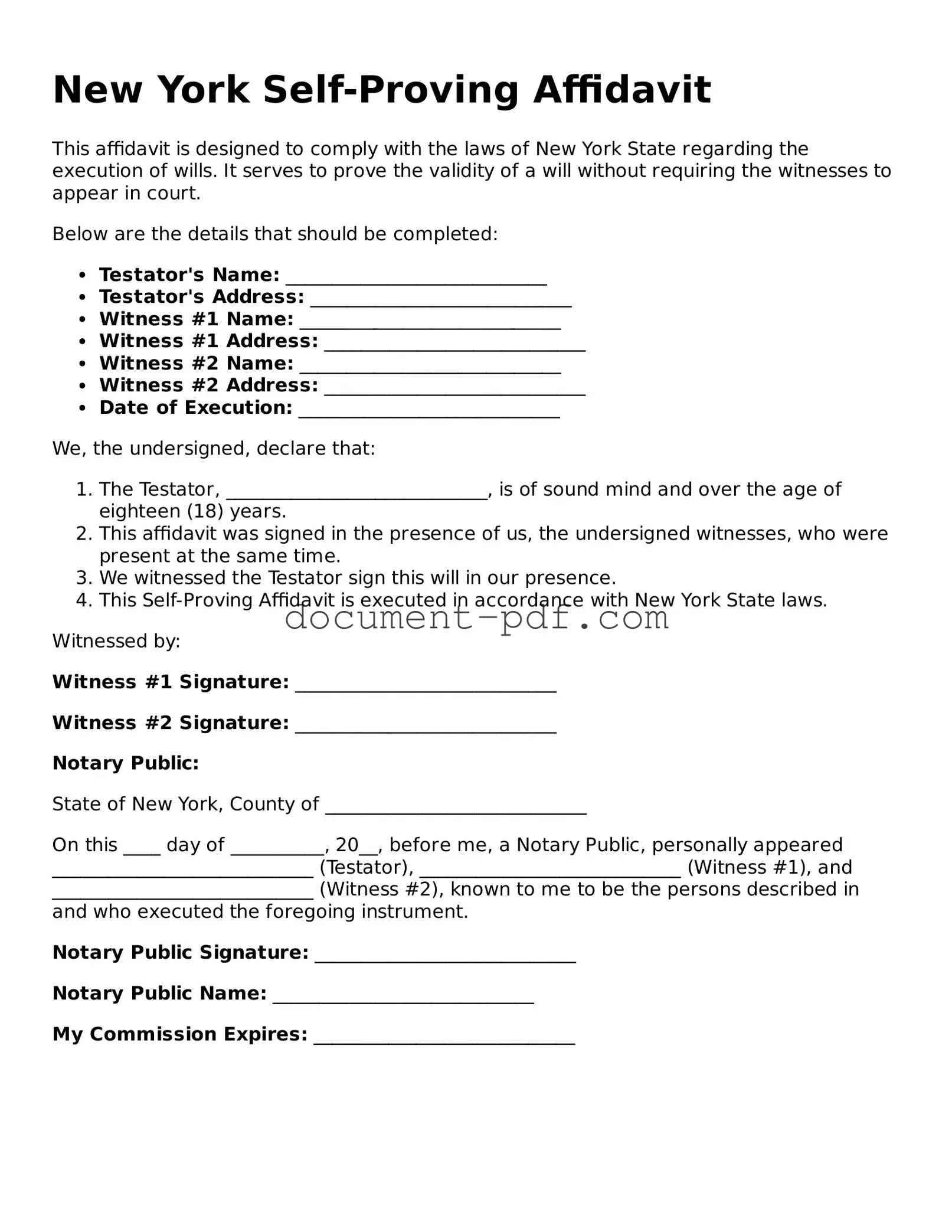New York Self-Proving Affidavit
This affidavit is designed to comply with the laws of New York State regarding the execution of wills. It serves to prove the validity of a will without requiring the witnesses to appear in court.
Below are the details that should be completed:
- Testator's Name: ____________________________
- Testator's Address: ____________________________
- Witness #1 Name: ____________________________
- Witness #1 Address: ____________________________
- Witness #2 Name: ____________________________
- Witness #2 Address: ____________________________
- Date of Execution: ____________________________
We, the undersigned, declare that:
- The Testator, ____________________________, is of sound mind and over the age of eighteen (18) years.
- This affidavit was signed in the presence of us, the undersigned witnesses, who were present at the same time.
- We witnessed the Testator sign this will in our presence.
- This Self-Proving Affidavit is executed in accordance with New York State laws.
Witnessed by:
Witness #1 Signature: ____________________________
Witness #2 Signature: ____________________________
Notary Public:
State of New York, County of ____________________________
On this ____ day of __________, 20__, before me, a Notary Public, personally appeared ____________________________ (Testator), ____________________________ (Witness #1), and ____________________________ (Witness #2), known to me to be the persons described in and who executed the foregoing instrument.
Notary Public Signature: ____________________________
Notary Public Name: ____________________________
My Commission Expires: ____________________________
